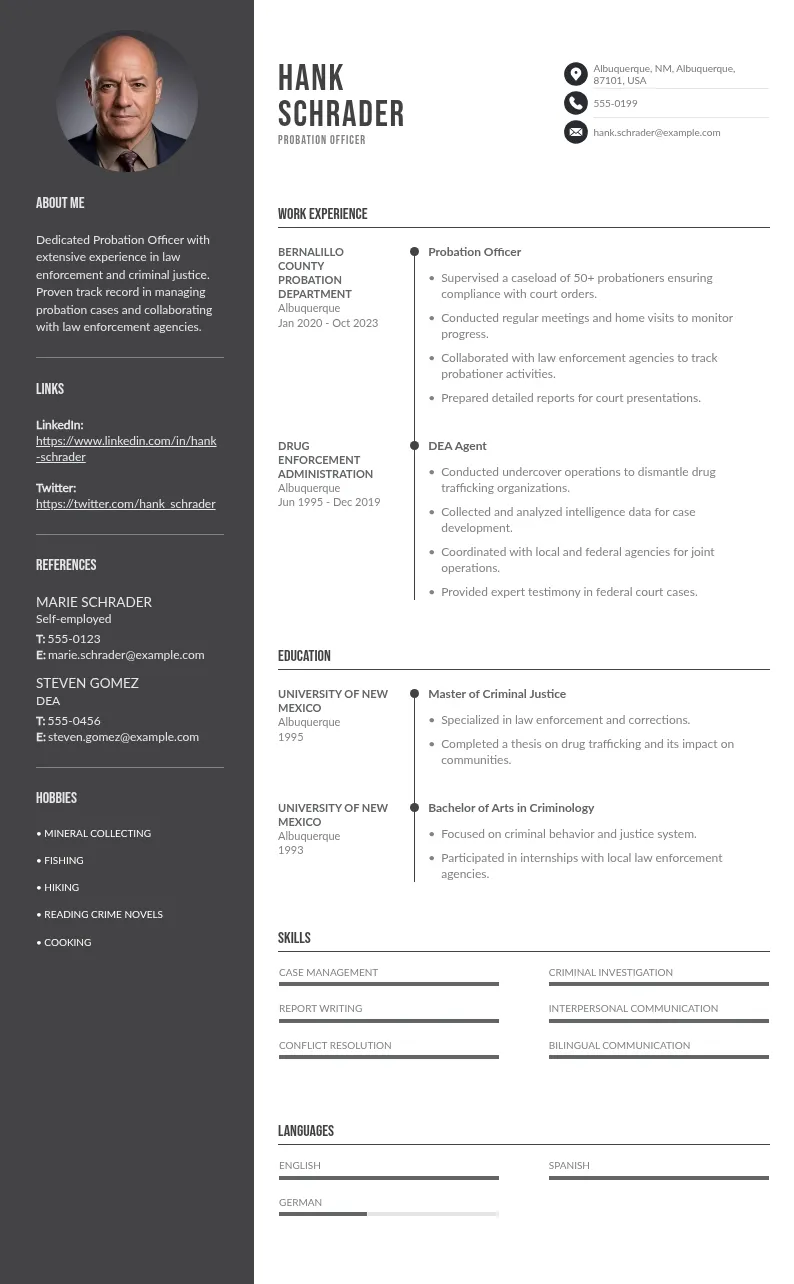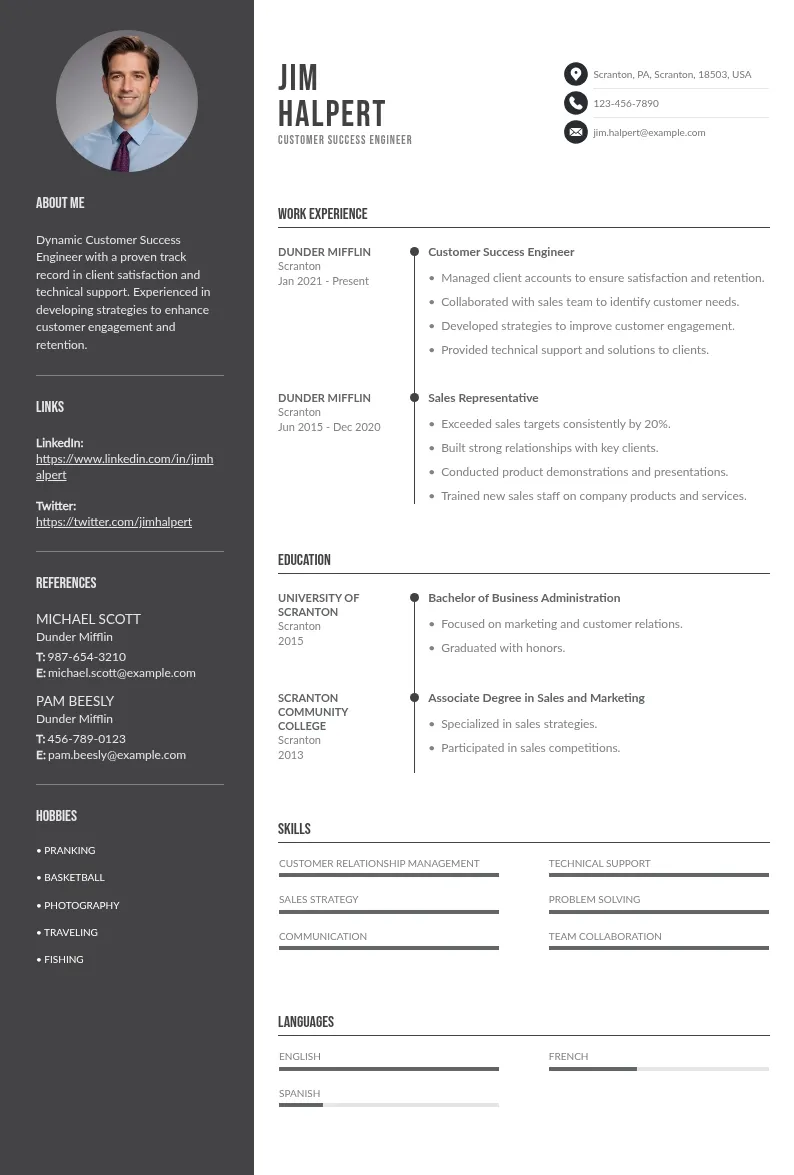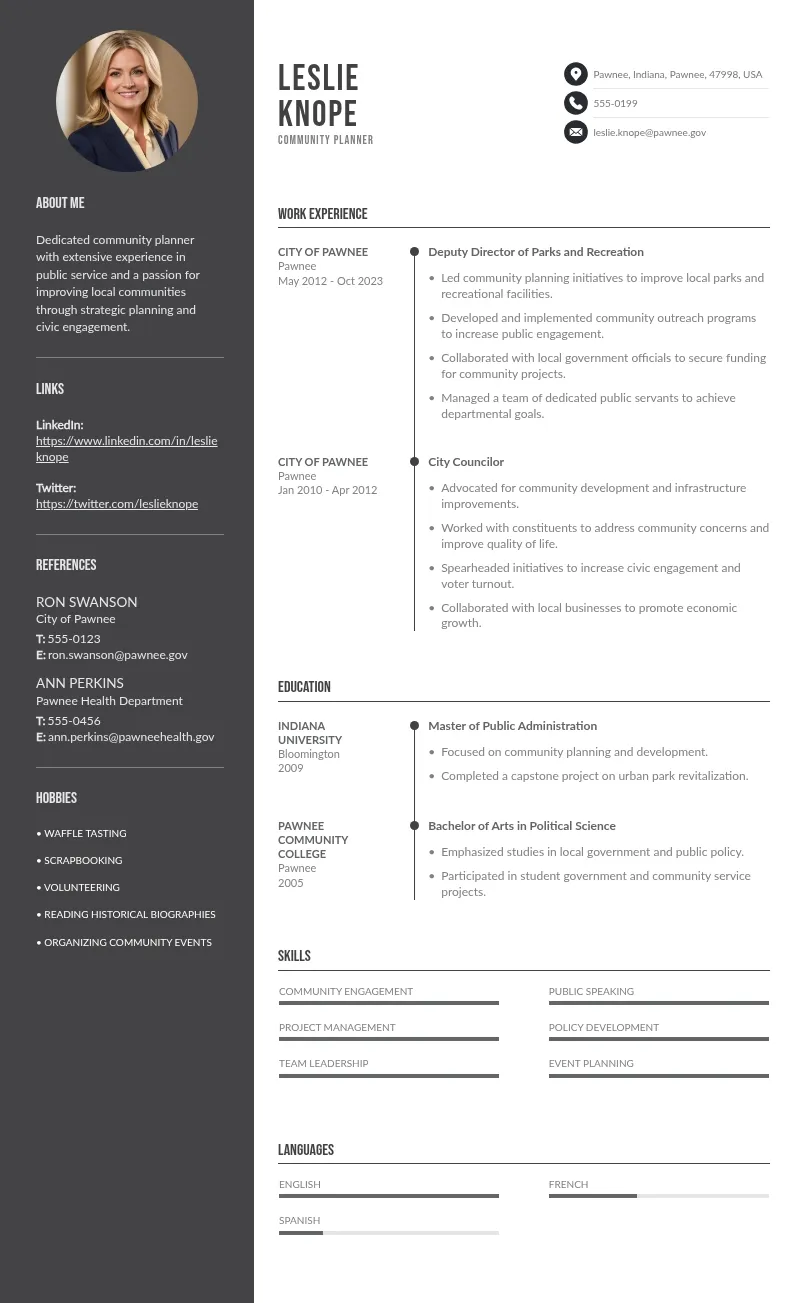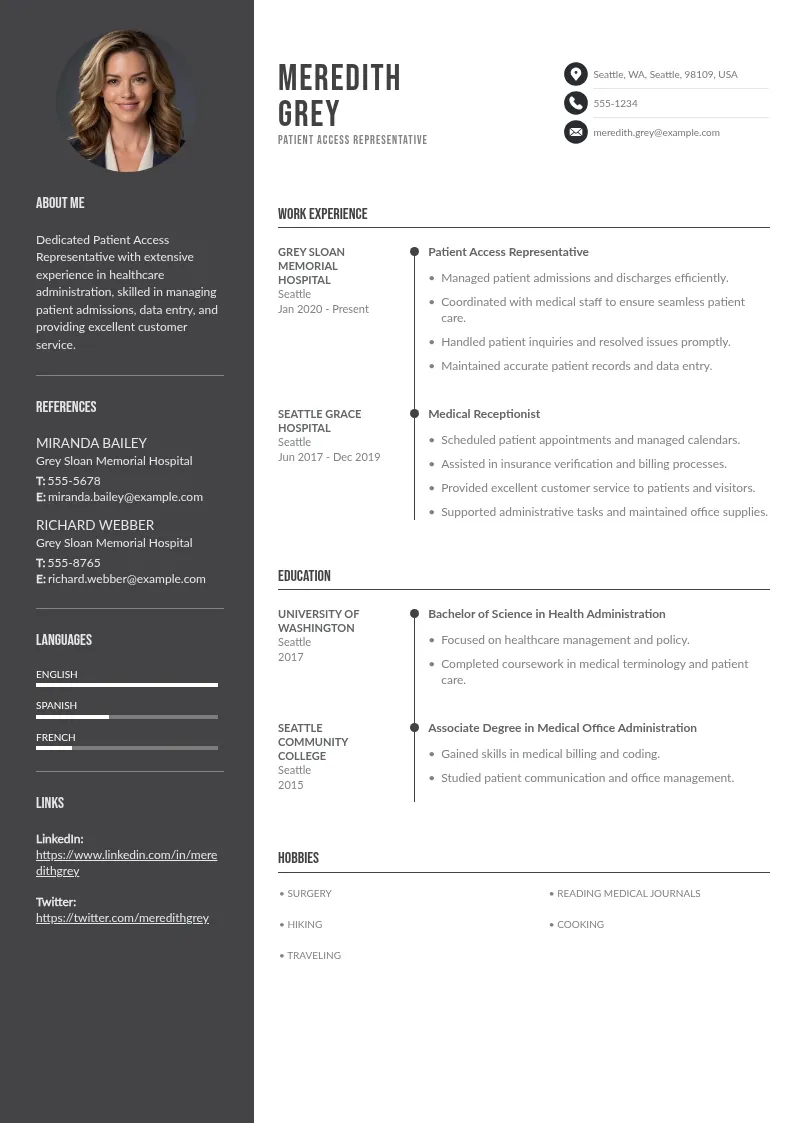In the ensuing article, we will delve into the art of crafting a perfect CV in Korean, specifically tailored for the Korean job market. A CV, or Curriculum Vitae, is an essential tool when applying for jobs, as it presents an overview of your professional and academic history. In specific markets like Korea, having a CV in Korean is particularly significant. It not only demonstrates your linguistic proficiency, which is of high importance in this largely monolingual society, but also indicates your cultural understanding and willingness to adapt to the local environment. This can significantly enhance your chances of securing employment. Our primary focus will be on helping you understand the structure, key components, and the cultural nuances of a Korean CV to ensure that yours stands out to prospective employers in the Korean job market.

Utilizing Essential Phrases to Write a Resume in Korean
In the following section, you will find a comprehensive list of essential terms associated with resume writing translated into Korean. This list of terminologies will aid you in understanding and drafting a professional resume in Korean context.
- Resume Structure: 이력서 구조 (Ilyeokseo gujo)
- Resume Formatting: 이력서 형식 (Ilyeokseo hyeong-sik)
- Education: 교육 (Gyo-yuk)
- Skills: 기술 (Gisul)
- Internship: 인턴십 (Inteonsip)
- Work Experience: 경력 (Gyeonglyeok)
- Personal Information: 개인 정보 (Gaein jeongbo)
- Contact Information: 연락처 정보 (Yeonlakche jeongbo)
- Career Objective: 직업 목표 (Jik-eob mokpyo)
- Certifications: 자격증 (Jagyeokjeung)
- References: 참조 (Chamjo).
These terms will help you navigate through the process of resume writing in Korean more effectively.
Utilizing Effective Korean Grammar in Your Resume
When writing a resume in Korean, it is important to use the correct grammar and conjugations. The main tense used in writing a resume in Korean is the past tense, as it is used to describe previous work experiences and completed education. However, the present tense can also be used to describe current job positions or ongoing studies.
In terms of the person, it's standard to use the first person, but unlike in English, it's common to omit the personal pronoun (나는/I) in Korean and focus on the action or the achievement instead. For example, 'I developed a new marketing strategy' would translate as '새로운 마케팅 전략을 개발했다' in Korean, omitting the 'I'. This is because Korean language has a high context culture, where words and phrases can be left unsaid if they are understood in context.
Furthermore, the Korean language has different levels of politeness, and in a formal document like a resume, you'd want to use the highest level, which is called the 존댓말 (honorific) form. For instance, if you want to say "I worked at a company", it would be translated into "회사에서 일했습니다". The "습니다" ending indicates that you are using the honorific form.
Lastly, use action verbs to describe your experiences. In Korean, verbs usually come at the end of sentences. For instance, "I managed a team of five" becomes "5인 팀을 관리했다" in Korean. Here, 관리했다 (managed) comes at the end of the sentence.
Understanding the Significance of Structure and Formatting in Korean Resumes
Career goals and challenges are the initial stepping stones in the journey towards professional achievement. In this journey, one critical tool that holds paramount importance is a well-structured CV, especially in the competitive Korean job market. A meticulously crafted CV not only exhibits one's qualifications and experiences but also reflects their professionalism and attention to detail, making it an integral part of their professional persona. The layout of the CV, in particular, can convey a lot about the individual's organizational skills and their ability to present information in a coherent and aesthetically pleasing manner. This article aims to inspire you to understand the importance of layout and structure in a CV, and how it can potentially make you stand out in the vibrant and challenging Korean job market.
Besides the Korean Resume Template, we also offer other similar templates you might be interested in.
- Swedish CV
- Bengali CV
- Indonesian CV
- Armenian CV
- Azerbaijani CV
- Bulgarian CV
- Greek CV
- Georgian CV
- Filipino (Tagalog) CV
Mastering the Art of Formatting: Crafting Your Korean Resume to Perfection
- The font used in a Korean CV should be clear and professional. It is recommended to use universally accepted fonts such as Times New Roman, Arial or Calibri. Fonts that are too decorative or handwriting-like can make the document look unprofessional and difficult to read.
- The format of a Korean CV is typically conservative and simple. It should be straightforward and easy to navigate, focusing on presenting information concisely. Overly complex or decorative formats can distract from the primary content of the CV.
- Margins should be set at 1 inch on all sides to provide a clean and balanced appearance. This also leaves enough space for the employer to make notes or comments.
- Bullet points are a must in a Korean CV. They make it easier for employers to skim through and understand your qualifications quickly. Each bullet point should begin with strong action verbs and be concise.
- Separators such as lines or spaces should be used to break up different sections of your CV, making it visually easier to digest the information. However, they should be used sparingly so as not to clutter the document.
- As a piece of advice, avoid using bright colors in a Korean CV. Stick to a black and white color scheme for a professional appearance. Bold colors can be off-putting and unprofessional in the Korean job market, which generally values conservatism and professionalism.
- Finally, the template used should conform to Korean standards. This typically means a one-page format with a reverse chronological order, starting with the most recent experiences. This is because Korean employers tend to value current skills and experiences over older ones.
Mastering the Art of Resume Structure: Crafting a Korean CV
.jpeg)
In a Korean CV, the structure and main parts are slightly different from the Western style, and they are often more detailed. Here are the critical sections to include:
- Personal Details: This section should include your full name, date of birth, gender, marital status, and contact information. In South Korea, it is standard to include a professional-looking passport-sized photo.
- Objective or Personal Statement: This must be a concise, precise statement that outlines your career goals and why you are applying to the company. For instance, "I am seeking a position in XYZ company to utilize my marketing skills and contribute to the company’s growth."
- Education: List your educational background in reverse chronological order, starting from the most recent. Be sure to include the institution's name, your degree, and the dates of attendance.
- Skills: This section should showcase your abilities relevant to the job you're applying for. For example, if you're applying for a teaching position, you might list "Classroom management" or "Lesson planning" as skills.
- Experience: This is a crucial part of a Korean CV. It should be listed in reverse chronological order and include the company's name, your job title, and the dates of employment. Be specific about your duties and achievements in each role.
- Certifications & Training: Koreans value continuous learning, so if you've taken any courses, workshops, or training related to the job you're applying for, list them here.
- Language Skills: If you're a foreigner applying for a job in Korea, this section can make you stand out. Include the languages you speak and your proficiency level in each.
- References: It's common in Korea to provide references, preferably from previous employers.
Mastering the Art of Crafting the Perfect Korean Resume Header

The header of a Korean language resume is crucial as it should be clearly visible and include all the necessary contact information. To create an effective header, start by writing your last name, followed by your first name. Next, include your profession and your specific discipline. Following this, provide your mailing address to ensure potential employers know where you're located. Your phone number should be next, including any necessary area codes for clear communication. Finally, include your email address, ensuring it's professional and appropriate for a work environment.
Picture Perfect: The Significance of a Photo in Crafting a Korean Resume
In the Korean job market, it is common practice to include a photo in the resume. Many Korean employers still expect to see a professional headshot attached to a job application. The photo should be a recent, passport-style headshot, typically 3.5 cm wide by 4.5 cm high. It should be a clear, front-facing photograph with a neutral background. The attire should be professional to reflect the nature of the job applied for.
However, the trend is slowly changing with some companies, especially international firms and startups, beginning to discourage or even ban the use of photos to promote diversity and prevent discrimination. Therefore, it's essential to do some research on the specific company's culture and requirements before deciding to include a photo in the resume.
Highlighting Your Experience: A Crucial Element for Korean Resumes
Crafting the Experience Section of Your Resume for the Korean Job Market
The experience section of a Korean CV holds great significance as it provides potential employers with a snapshot of the applicant's professional trajectory and skill set. It is a succinct account of the candidate's past roles, responsibilities, and achievements in their professional tenure, thereby serving as a testament to their capability and efficiency.
- Chronological Order: It is imperative to list the experiences in reverse chronological order, starting with the most recent job. This not only aids in showcasing the candidate's upward career progression, but also highlights their current skill level and expertise.
- Contract Dates: Be sure to include the contract dates or tenure for each job listed. This gives the employer an idea of the candidate's stability and experience in each role, which can be a significant determinant in the selection process.
- Job Title: The job title of each role should be clearly stated. This provides a clear understanding of the candidate's level of responsibility and the nature of their role in each organization.
- Bulleted List: Use a bulleted list to detail the responsibilities and achievements in each role. This aids in easy readability and allows the employer to quickly gauge the candidate's suitability for the job.
- Job Description: Under each job title, a concise yet comprehensive job description should be included. This should detail the tasks undertaken, the skills utilized and the results achieved, thereby providing a holistic view of the candidate's capabilities.
- Use of Key Words: Incorporate key words related to the job in question within the experience section. This not only makes the CV SEO-friendly but also highlights the candidate's familiarity and expertise in the field.

Managing Lack of Experience While Crafting a Korean Resume
Navigating the task of filling out a CV in Korean with no work experience can be daunting. However, it does not have to be a stressful endeavor. Below are practical and easy-to-use tips that will guide you through this process, helping you create a compelling CV even if you don't have any professional experience to lean on.
- Start with Personal Information: Write your full name, contact details, and address. In Korea, it is also common to include your date of birth and gender.
- Objective Statement: Write a clear and concise objective statement to express your career goals and why you are suitable for the job, even without experience.
- Language Skills: Highlight your language skills, specifically Korean and English. If you are proficient in other languages, mention them too.
- Education: List your educational qualifications in reverse chronological order, starting with the most recent. Include your university, degree, and graduation date.
- Skills: Identify transferable skills that you've gained from your education, hobbies, or volunteer work. These could include leadership, teamwork, problem-solving, or communication skills.
- Hobbies and Interests: Korean employers often look at hobbies and interests to assess a candidate's personality and fit for the company culture. So, include relevant hobbies or interests.
- Volunteer Work: If you have done any volunteer work, include it. This can demonstrate your initiative and commitment, which are valuable traits for employers.
- Certifications and Training: Include any relevant certifications or training you have undertaken. Even if they're not directly related to the job, they show a willingness to learn and improve.
- References: Include references from teachers or people who can vouch for your character and skills. Make sure to ask their permission before adding them to your CV.
- Use Professional Language: While writing your CV in Korean, use formal and professional language. Avoid using slang or informal terms.
- Proofread: Lastly, proofread your CV multiple times to check for any grammatical errors or inconsistencies. You can also ask a native Korean speaker to review it for you.
- Keep it Short and Neat: A CV in Korea should generally not exceed two pages. Make sure it is well-organized and easy to read.
- Use Standard Photo: Unlike most countries, in Korea, it's common to include a professional headshot photo in your CV. Make sure to use a clear, recent photo.
Emphasizing the Importance of Education in Your Korean Resume
The education section in a Korean CV is of paramount importance due to the high value Korean society places on formal education and academic achievements. This section not only demonstrates the candidate's level of knowledge, skills, and abilities, but also reflects their dedication, discipline, and commitment to completing a course of study. Given the competitive nature of the Korean job market, an impressive educational background can significantly enhance a candidate's appeal to potential employers.
Furthermore, the education section in a Korean CV often serves as a measure of a candidate's suitability for a particular job role. Employers often look for candidates who graduated from prestigious universities or who have completed relevant coursework. Therefore, providing accurate and detailed information about one's educational background in a CV can greatly influence an employer's perception of the candidate's capabilities and potential for success in the role.
Prioritizing Education Details on Your Korean Resume
In general, education is considered a significant factor in Korean resumes and is typically listed first, especially for students or recent graduates. This placement is due to the high value placed on education in Korean society. It reflects the individual's academic achievements, the prestige of the institution they attended, and potential suitability for the job role. For instance, a resume from a recent graduate from Seoul National University, one of the prestigious 'SKY' universities, would likely lead with this information to immediately signal their high academic standing to potential employers.
However, the rule is not absolute. For mid-career professionals or those applying for senior roles, career achievements and job-related experiences might take precedence over educational qualifications. For example, a candidate with a decade of experience in the IT industry applying for a senior role may highlight their career milestones, skills, and experiences first, as these are more relevant and telling of their capabilities than their educational background. Therefore, while education is critical in Korean resumes, its placement may vary depending on the applicant's career stage and job role.
Honing Your Skills Section: A Crucial Aspect of Korean Resumes

Skills play a pivotal role in a Korean resume as they reflect a candidate's ability to perform specific tasks and solve problems related to the job. They demonstrate a candidate's competencies, experience, and ability to add value to the organization. Recruiters in Korea highly value both hard skills, like proficiency in technical tasks or foreign languages, and soft skills, such as communication and teamwork. Moreover, possessing skills that are particularly important in Korean corporate culture, such as adaptability and respect for hierarchy, can significantly increase a candidate's chances of securing a job.
In Korea's job market, recruiters are not only looking for candidates with the right skill set but also for those who fit well into the company's culture. This includes showing respect for superiors, being able to work long hours, and demonstrating commitment and loyalty to the company. Additionally, due to Korea's competitive job market and emphasis on education, having a strong academic background from a reputed university often carries significant weight. In recent years, creativity, innovative thinking, and global competency have also become highly sought-after skills as Korean companies continue to expand their global footprint.
Below, we will provide a sample list of soft skills and hard skills that could be beneficial when composing a resume in Korean.
Additional Sections to Enhance Your Korean Resume
Additional headings in a Korean CV can provide an extra edge by providing more insight about the applicant’s skills, interests, and capabilities. They offer a more comprehensive view of the candidate beyond their academic qualifications and work experience. Additional categories like Languages, Hobbies or Interests, Certificates, Driving licenses, References, or IT tools can differentiate an individual from the crowd, highlighting specific talents and abilities that are relevant to the job. For this illustration, I will choose Languages and IT tools.
The Languages category is an essential addition, especially in today's globalized work environment. This section shows the applicant's proficiency in various languages, which can be a critical factor for international companies or positions that require communication with overseas clients or partners. In Korea, fluency in English in addition to Korean is highly valued, as many businesses have global operations. Having proficiency in other languages also showcases the applicant's adaptability and willingness to learn, traits which are highly valued by employers.
The IT tools category is another vital addition to a Korean CV, given the dominance of technology in almost every business sector today. This section allows the applicant to showcase their proficiency in various technological tools, software, and platforms, which can be a significant advantage, especially for positions that require technical expertise. For instance, familiarity with Microsoft Office Suite, Adobe Creative Suite, or coding languages can be highlighted in this section. In Korea, where the digital landscape is rapidly evolving, having a strong command over IT tools can give an applicant an edge over others.
Enhancing Your Korean Resume: Key Areas for Improvement
Creating a CV that stands out in the South Korean job market requires certain considerations. Here are some practical tips to help you improve your Korean CV:
- Include a Professional Photo: In Korea, it's common to include a professional headshot on your CV. Make sure it's a high-quality photo with formal attire.
- Use an Appropriate Format: Korean CVs typically follow a chronological order. Start with your most recent job and work backwards. Each job should include your job title, the name and location of the company, and the dates of your employment.
- Emphasize Language Skills: If you are bilingual or multilingual, especially if one of your languages is Korean, make sure to highlight this in your CV. Language proficiency is highly valued in the Korean job market.
- Include Personal Information: Unlike some Western countries, in Korea it's common to include personal information such as age, marital status, and nationality in your CV.
- Highlight Internships or Relevant Experience: If you've done any internships or have any work experience related to the job you're applying for, be sure to highlight this in your CV.
- Education Details: Provide a detailed explanation of your educational background. If you studied abroad or have a degree from a foreign institution, highlight this as it can be seen as a positive attribute.
- Attach Certificates: If you have any certificates, especially language proficiency ones like TOEIC or TOPIK, include them. Korean employers value these documents.
- Keep it Concise: Try to keep your CV as concise as possible. One to two pages should be enough. Remember, clarity and brevity are key to an effective CV.
Essential Components of a Korean Resume

To conclude, creating an effective Korean CV requires a clear understanding of the cultural nuances, professional expectations, and specific formatting rules in Korea. It's not merely about translating your existing resume into Korean language but more about presenting your skills and experiences in a way that resonates with Korean employers. Here are some key points to consider:
- Use standard A4 size paper and keep your CV to a maximum of two pages. Korean employers prefer concise and to-the-point information.
- Personal details are important. Along with your name and contact information, include your age, gender and a recent professional photograph. This is a common practice in Korea.
- The CV should be written in Korean unless the job specifically requires English or another language. If you're not fluent in Korean, consider seeking assistance from a native speaker or professional translator.
- Highlight your educational background. If you've studied in Korea or have a degree from a well-known foreign institution, make sure to mention this.
- Be specific about your work experience. List your job duties, achievements and the skills you've gained. Stick to facts and avoid exaggerations.
- References are usually not necessary unless specifically requested, so save that space for more important information about you.
- If you have any Korean language proficiency or hold a TOPIK (Test of Proficiency in Korean) certificate, definitely include this. It's an added advantage in the Korean job market.
- Lastly, proofread your CV multiple times to avoid any spelling or grammar mistakes. It's not just about language accuracy but also about showing your attention to detail and professionalism.
Crafting an Effective Cover Letter in Korean
When applying for a job in Korea, it's crucial to include a cover letter along with your resume. This is because a cover letter provides a more in-depth introduction of yourself, showcasing your personality, motivation, and how your skills and experiences align with the job requirements. It also allows you to explain why you are interested in the position and how you can contribute to the company's success. Furthermore, a well-written cover letter can help you stand out from other candidates, giving you an edge in the competitive Korean job market. Lastly, it demonstrates your communication skills and ability to articulate your thoughts clearly and professionally, which are highly valued by Korean employers.


































